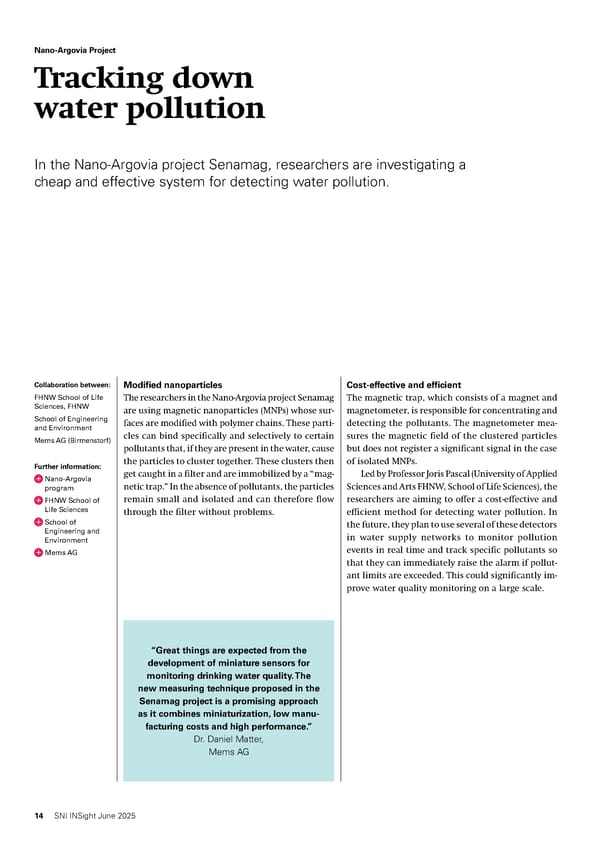Modified nanoparticles The researchers in the Nano-Argovia project Senamag are using magnetic nanoparticles (MNPs) whose sur- faces are modified with polymer chains. These parti- cles can bind specifically and selectively to certain pollutants that, if they are present in the water, cause the particles to cluster together. These clusters then get caught in a filter and are immobilized by a “mag- netic trap.” In the absence of pollutants, the particles remain small and isolated and can therefore flow through the filter without problems. Cost-effective and efficient The magnetic trap, which consists of a magnet and magnetometer, is responsible for concentrating and detecting the pollutants. The magnetometer mea- sures the magnetic field of the clustered particles but does not register a significant signal in the case of isolated MNPs. Led by Professor Joris Pascal (University of Applied Sciences and Arts FHNW, School of Life Sciences), the researchers are aiming to offer a cost-effective and efficient method for detecting water pollution. In the future, they plan to use several of these detectors in water supply networks to monitor pollution events in real time and track specific pollutants so that they can immediately raise the alarm if pollut- ant limits are exceeded. This could significantly im- prove water quality monitoring on a large scale. Tracking down water pollution In the Nano-Argovia project Senamag, researchers are investigating a cheap and effective system for detecting water pollution. Collaboration between: FHNW School of Life Sciences, FHNW School of Engineering and Environment Mems AG (Birmenstorf) Further information: Nano-Argovia program FHNW School of Life Sciences School of Engineering and Environment Mems AG “Great things are expected from the development of miniature sensors for monitoring drinking water quality. The new measuring technique proposed in the Senamag project is a promising approach as it combines miniaturization, low manu- facturing costs and high performance.” Dr. Daniel Matter, Mems AG 14 SNI INSight June 2025 Nano-Argovia Project
 SNI Insight - 2025 June Page 13 Page 15
SNI Insight - 2025 June Page 13 Page 15